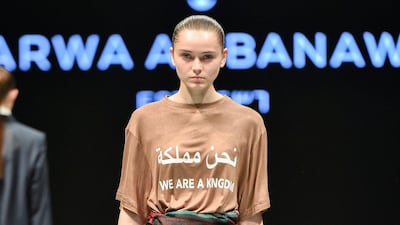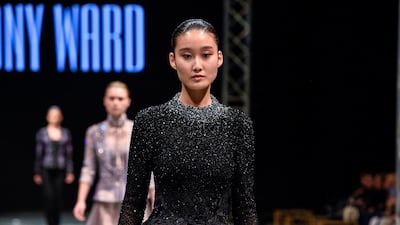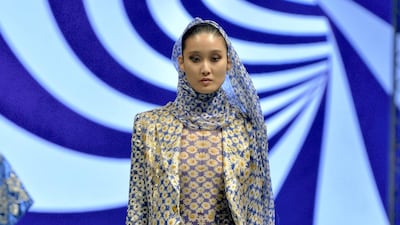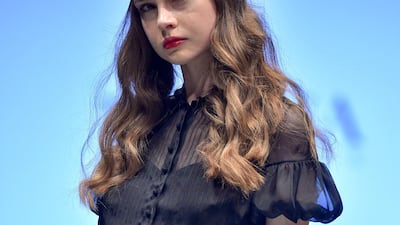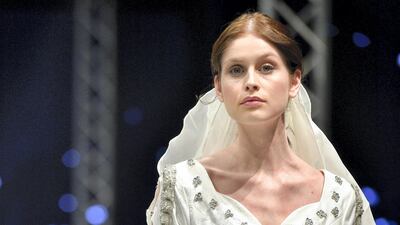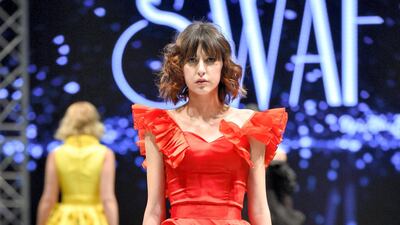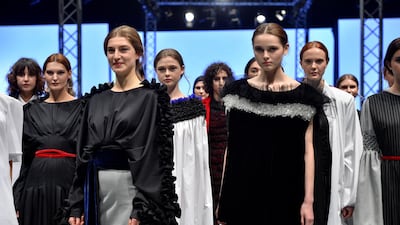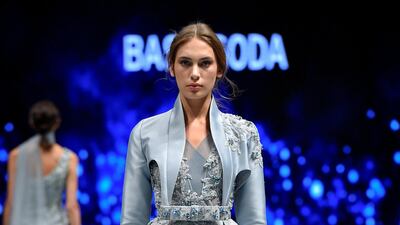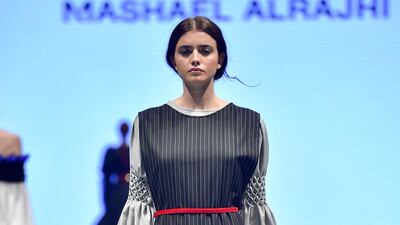A torrential rainstorm in Riyadh forced a 24-hour postponement and a hasty rearrangement of the schedule for the first official Arab Fashion Week to be staged in Saudi Arabia last weekend. Finally, on Thursday evening, the first models stepped on to the runway on this landmark occasion wearing Lebanese designer Tony Ward’s spring/summer 2018 couture evening wear.
This high-profile, high-stakes event would have been unthinkable just two years ago, but strict social restrictions have eased dramatically under Crown Prince Mohammed bin Salman. Fashion week organiser’s have gone to great lengths to highlight the changes he is making in the kingdom, which has led the way for this ambitious and glamorous new development.
Overwhelming interest
Restrictions persist, however. Arab Fashion Week, held in a tented venue at the Ritz-Carlton in Riyadh, was a women-only event. Men and cameras were permitted at the reception on the opening evening, but only women were allowed at the catwalk shows. This meant that after a parade of hand-beaded gowns in black and cosmetic colours that was first presented in Paris in January, there was no Instagramming from the front row, and Tony Ward could not come on stage to take his customary bow. However, the country is evolving, and this may change in future.
The rain was not the first delay to Arab Fashion Week, which was initially announced in February by Princess Noura bint Faisal Al Saud, the honorary president of the Arab Fashion Council. It was originally scheduled for the end of March, but was delayed three days before the opening night. Jean Paul Gaultier, Roberto Cavalli and a host of well-known designers from this region were confirmed, but organising a fashion week does not come without problems, such is the media scrutiny of such a significant event.
The decision to delay was taken because organisers were overwhelmed by the international support and buzz for the event, plus visas were an issue. Even allowing for a two-week postponement, some press did not receive their permits in time; the visa for Aiisha Ramadan, a Lebanese designer from Dubai, was confirmed only a few days ahead of her trip to Saudi Arabia, forcing a last-minute rush to get everything prepped for her show. Many of her clients live in Saudi Arabia, yet the place was initially as much a mystery to her as it was to the international press and designers who made it to Riyadh.
A glamorous affair in Riyadh
Black beaded gowns over catsuits, capes and jumpsuits, pearl-beaded creamy gowns and a couple of standout long red dresses featured in this see-now, buy-now ready-couture presentation drawn from this year's collections, which Ramadan described as the "Golden Age of Aiisha". The models were European, Russian and from the UAE, and Make Up Forever recruited a team of female Saudi make-up artists for the event.
The first fashion shows to be held in Saudi Arabia were greeted locally with great excitement and, naturally, they were glamorous affairs. Scheduled for the evenings so guests could dress in their finery, the organisers went all out to make this as polished and sophisticated as possible. BMW cars delivered guests from the hotel to the venue, although it was only a few minutes’ walk from the hotel lobby. Fashion week partner Harvey Nichols hosted a large pop-up shop and some trunk shows. Customers could nibble on Fauchon chocolates and Ladurée macarons, and mill about the sponsor’s Huawei mobiles before settling on velvet sofas (for the VIPs) lining the catwalk to watch six designer collections back-to-back each evening.
A showcase for the region's designers
From the outset, the Arab Fashion Council wanted to showcase designers from the region, including those from the kingdom such as Arwa Al Banawi (now based in Dubai), Mashael Al Rajhi, SWAF and Arwa Al Ammari of ArAm Designs. It is a historic moment in Saudi Arabia, says Jacob Abrian, chief executive of the Arab Fashion Council, "with a wealth in resources far beyond oil, the kingdom is rich in its people and their ambitions for the future".
"It is the Arab Fashion Council's aim to make the fashion industry "a key pillar for the creative economies in the Arab world," he says. The talented Arwa Al Banawi is a strong example. From Jeddah and educated in Europe, she has a clear handle on tailoring with strong-shouldered pantsuits, fringed leather jackets and dresses that splice checks with plain fabrics or velvet with satin. But her Bedouin sweatshirts and T-shirt emblazoned with "We Are a Kingdom" teamed with a traditionally woven wrap skirt really caught the eye. Mashael Al Rajhi, from Riyadh, similarly mixed western tailoring with an Arab aesthetic, combining pinstripe pants and pencil skirts with loose layered tops. Modest wear, but the type you would wear for business anywhere
The fashion week came to a close with a glittering gala featuring the Jean Paul Gaultier show and a performance by Ballet Russia. Gaultier presented a selection of pantsuits and long dresses drawn from the latest couture show presented in January.
"By launching the first Arab Fashion Week in Riyadh, we are affirming the position of Saudi Arabia not only as an economic force, but also as a cultural and creative hub," Princess Noura says. "Fashion is a form of a universal language. It is something that is dynamic and in constant change, but it's not all about trends and design. The fashion sector employs a large group of people," she says, listing design, production, marketing and tourism in a country where the median age is 29. "We believe in the potential of the fashion industry, and we believe in the future of this country."
